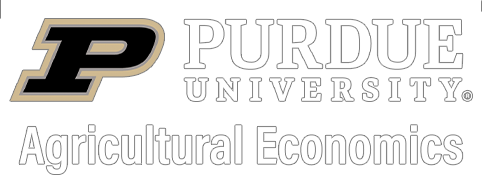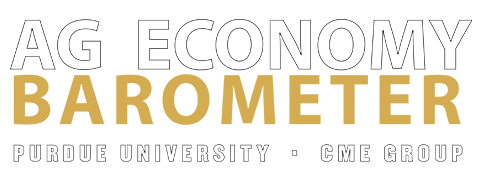Search our entire resource library
You're viewing a specific archive. Looking for something and want to search by keyword or just take a general look at ALL our resources? Click Search below!
feed
Indiana corn prices have dropped sharply since September. The most recent WASDE report indicates that corn prices could remain low for the foreseeable future. Obviously, lower expected corn prices will translate into lower expected feed costs during the first part of 2024. What trends in feed costs will we see for 2024? And what’s the impact of corn and soybean meal prices on feed costs for farrow-to-finish and swine finishing operations?
Read MoreFed cattle prices have strengthened the last few months. At the same time, due to lower corn prices, feeding cost of gain has also declined. Partially in response to these two phenomena, feeder prices and breakeven prices have increased substantially.
Read MoreCorn prices have declined substantially since the first half of this year. This article examined the impact of higher corn prices on feeding cost of gain for cattle finishing.
Read MoreIndiana corn prices during the first quarter of this year were on average approximately $6.60 per bushel. The most recent WASDE report indicates that corn prices could be substantially lower for the upcoming crop.
Read MoreThis article discussed recent trends in feed costs for laying hens. Current projections suggest that feed costs for 2023 will be slightly lower than those experienced in 2022.
Read MoreCorn prices are 25% higher and soybean meal prices are 1% higher. Given that many of the supply and demand factors impacting the 2022 crop are going to persist way into 2023, what are the prospects for feed costs for farrow-to-finish and swine finishing production in the upcoming year?
Read MoreGiven that the U.S. stocks to use ratio is currently only 9.6 percent and continued questions related to U.S. corn acreage in 2022, there is tremendous uncertainty regarding corn prices for the rest of this year. To address this uncertainty, this article examines the impact of relatively high corn prices on feeding cost of gain and net returns for cattle finishing.
Read MoreGiven the uncertainty related to supply and demand, feed prices are likely to remain volatile during the 21/22 marketing year. This article examines trends in feed costs as well as the impact of corn and soybean meal prices on feed costs for farrow-to-finish and swine finishing operations.
Read MorePurdue ag economist Michael Langemeier discusses the key factors impacting feeding cost of gain in commercial feedlots.
Read MoreEach $0.10 increase in corn price results in an increase in feeding cost of gain of approximately $0.88. In turn, each $1 increase in feeding cost of gain results in a $5.56 per head decrease in cattle finishing net returns.
Read More


